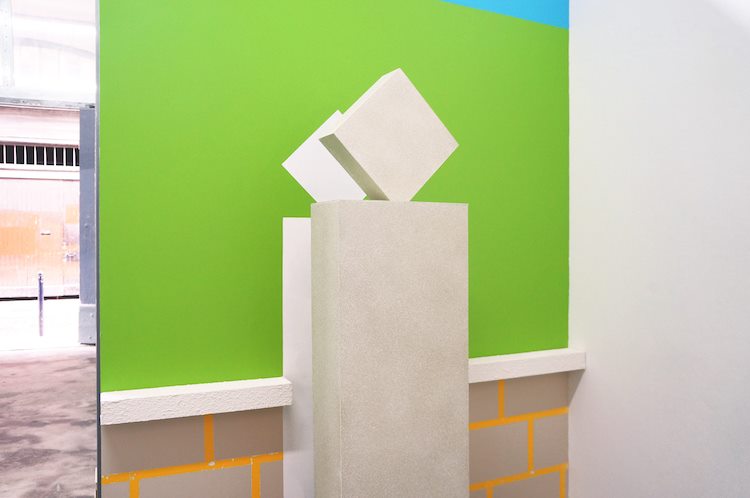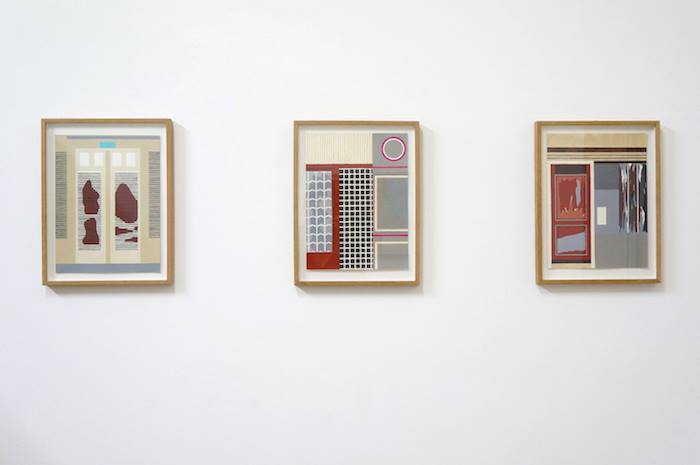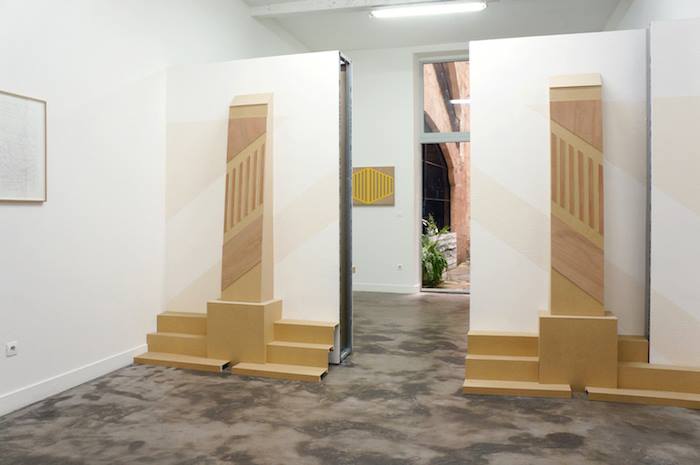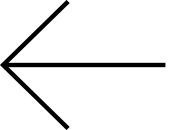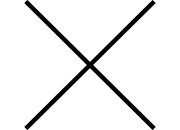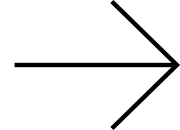Could you tell us a little bit about the title that you chose for your exhibition here?
Potemkine was a Russian minister, who is now surrounded by a sort of legend. According to this “myth” a whole village with rundown houses was transformed for the visit of an Empress: decors in cardboard were created up to scale in order to hide the tumbledown façades of the village, as a stage set would. I have been interested in architecture for quite a few years now, especially architectural elements that I photograph, and in those facades of houses I truly see pictorial motives and patterns that really resemble paintings and canvas. That is why I use a lot of repetitions and rhythms in my work, elements that are present in facades, and there is always that “décor” side of it, as a sort of mise en abîme that really interests me. I discovered this expression “Potemkine village” a little while ago and because the idea of decoration is so recurrent in my work, I thought it would be a very good title and a compelling way to start a discussion around this exhibition because there can be different ways to understand and read that phrase: with a very decorative side that sometimes becomes almost kitsch, but can also reference politics or a certain policy. The very term of “Potemkine village” is still present in common language and therefore this switch to “Villa Potemkine” plays with the kitsch side of it, and it was the meeting of the two, the connection that interested me. It came about during a discussion that I had with Amandine Pierné and Joan Coldefy concerning the creation of this exhibition. It was then that I decided to change “village” for “villa” because I found it extremely adequate to play with the different possible readings and interpretations.
And indeed we enter into your exhibition through a villa with the installation you decided to place at the entrance…
Yes, absolutely, and I thought of it this way, with the façade and the threshold of the villa that the visitor has to go through in order to walk further into the exhibition. I really wanted to work on quite a frontal approach for the entrance here, a kind of space into which one enters. I had the desire to modify the exhibition space a little.
How did you get the idea for this site-specific scenography that continues well into the bar?
I often have a site-specific practice, sometimes also outdoors, and I like to work with the exhibition space in which I settle. The mere presence of this other space, that bar, allowed me to create a zoom of sorts, a focus into the other side that plays with pilasters, paintings…as a little wink to the traditional exhibition space here at 5UN7. I really used and tried to create a dual space where there is barely any colour at the entrance, but once you pass through the installation it’s the total opposite with very vivid colours and different tones. However for the bar I didn’t consciously look for the harmony of the colours; I chose to place there a series of two paintings called Architectures itératives -meaning built and constructed on a rhythm- that I surrounded with two pilasters.
The way visitors move around and walk within the exhibition space is fundamentally important for me. That’s why I wanted to play both on a frontal aspect and on the circulation and movement of each individual. Being able to build a new space within the space of the gallery only by using architectural fragments that I have collected and reworked is also a pivotal aspect of my work. For example, I created Chimères [production during Jeanne Tzaut’s residency at the contemporary art space Le Bel Ordinaire in Pau in 2014-2015, editor’s note] which was a set of elements that I had photographed; I later used this bank of images to recreate architectures and spaces from very diverse fragments. I had set myself a fixed scale and I manipulated all those elements according to that scale in the space I wanted to build. Therefore I created sculptures and installations deriving from architectural fragments, and through that I recreated a space within the space given to me. I generally work in quite an empiric way.
The collection of photographs that you mention refers to the approach that you often use in your artistic practice, where you stroll around cities with your camera in hand, photographing architectural and urban elements that strike or attract your curiosity, and then reworking this collection of images. Are the pieces that you chose to exhibit here the products of your wanderings in Bordeaux?
No, not at all. There are photographs that I took in France: Grenoble, Sainte-Foy-la-Grande, Flers, La Rochelle, and also some that I took in Spain… None of the paintings here are images of the city of Bordeaux. But what seemed interesting to me was to give this title implying the idea of facades inside this town that is completely under construction, both inscribed on UNESCO’s World Heritage List and currently facing a fungus infestation and therefore also restorations of facades. The towns in which I take these photos don’t really matter to me at the end of the process because I see it more as a way of creating a database, a collection of images, of elements that I photograph. I sometimes don’t even write the name of the city on the back of the images. What I really like is to extract those elements and play with a side that almost reaches abstraction, while those elements and fragments can still echo a possible form or context of origin.
You refer to abstraction and indeed the geometrisation of forms is quite preeminent in your installation, drawings and in your “tableaux” [the carved wood panels that are hung on the walls as paintings, editor’s note] exhibited at 5UN7
The question of perspective is very present in my work and I like to play around with the perception that we have of it. For example, one can’t always figure out if the edge of the building I drew is going towards them or if it is dipping away from them. The repetition of certain patterns that don’t always refer to the same thing. With the solids I incorporate we are in the realm of painting, with an architecture being evoked, but those opaque forms also refer to the question of volume for me. The loss of bearings, of reference points experienced by the visitor is a way for me to recreate a space. I like to use weirdness and oddity, I like to leave the visitor without answers when one wonders if the sculptures detached from my installation are really parts of it, if the spaces left blank represent the shadows of those sculptures…
Mixing codes and materials are also means for me to call upon the visitor’s perception and to question one’s references. For example in my installation placed at the entrance there are some features that can refer to art-deco, but there is also this strip of rough plaster that can be a citation of the Bouygues house; and when one goes through the installation, the reverse side shows a much more kitsch aspect. It’s the reunion of decay and vibrant splendour that attracts me, the way in which those spaces are inhabited but also the way they live independently from their inhabitants, as I tried to convey in the three paintings depicting storefronts and facades that I am exhibiting here. They are architectures that could echo stories, a political history, a cultural history, an artistic movement; but that could also refer to the very life of the place, how it is, or was, inhabited and lived. The colour also allows me to create an offset, a discrepancy, to bring the visitor somewhere else, to recreate again another universe and atmosphere -that could relate to the Neo-geo movement for example-, but it also constructs a fake decorative aspect that I like a lot. For me the gaze, the sight is essential; mine of course but also the onlooker’s, the visitor’s.
Interviewed by Julie Hoedts



